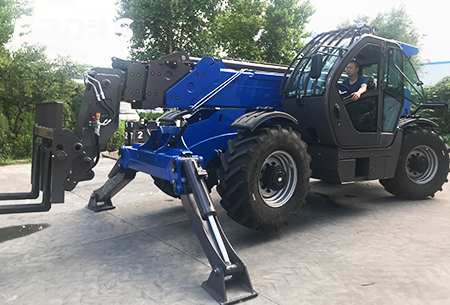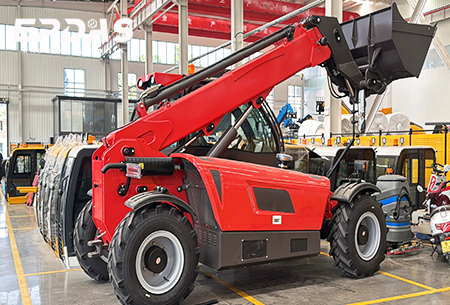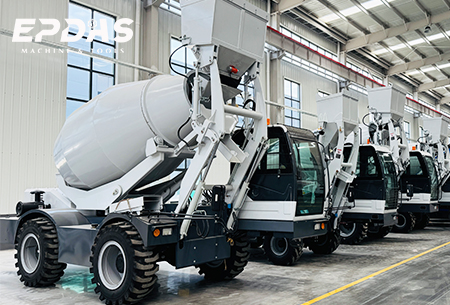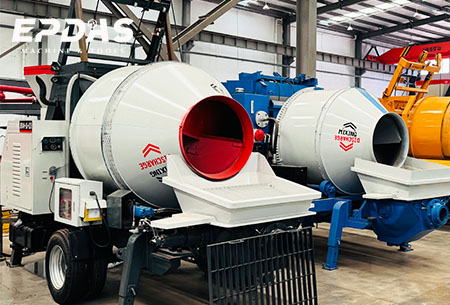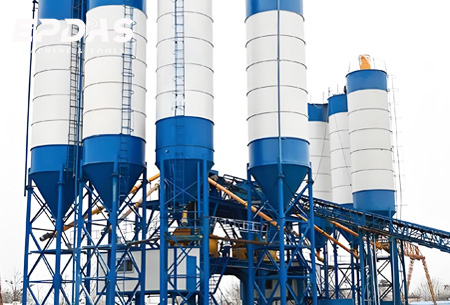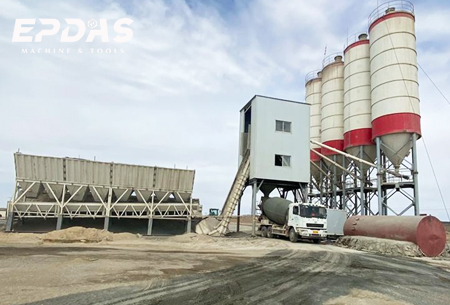Concrete, as the core material of modern construction engineering, is widely used in all kinds of building structures and infrastructures. From the main structure of high-rise buildings to the load-bearing components of bridge projects, from the pavement of road projects to the support system of underground space, concrete has become an indispensable key material for engineering construction by virtue of its excellent compressive performance, durability and economy.
With the development of construction technology, the performance of concrete materials has been continuously upgraded, from ordinary concrete to high-performance concrete, and from cast-in-place construction to prefabricated assembly, the progress of concrete technology continues to promote the development of the construction industry in the direction of more efficient and environmentally friendly. Against the backdrop of accelerating urbanization, concrete materials will remain an important foundation for supporting the development of modern construction.
It is one of the few materials that can play multiple roles in the whole process of construction, whether it is to build a solid skeleton of a building or to serve as a leveling flooring material, it can be seen in all corners of the construction site.
Look at the new buildings being constructed in towns and cities and you’ll notice that most of them are built from concrete. This material, made from a careful mix of aggregates such as sand and gravel and cement binders, has an irreplaceable position in the construction industry, and is widely used in foundations, walls, pillars, and many other areas, providing a solid guarantee of building solidity and durability.
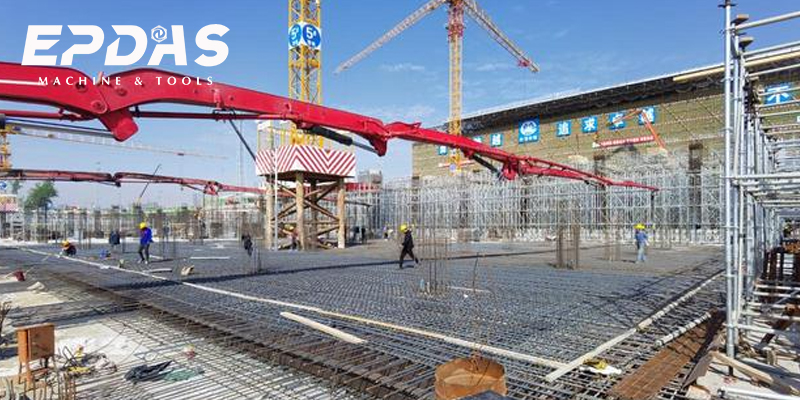
High material properties are required:
Need to formulate high-flow concrete (slump 180-220mm)
Admixtures such as high-efficiency water reducers and retarders must be added.
Strict requirements on aggregate grading and paste stability
Pumping construction is difficult:
Pumping pressure increases with the height, 300 meters of construction requires 10-12MPa pressure
Easy to block the pipe, pipe burst and other construction faults
Easy to produce material segregation during pumping
Quality control key point:
Temperature control of mass concrete (temperature difference ≤25℃)
Pouring continuity control (interval ≤ 2 hours)
Structural uniformity control (strength deviation ≤15%)
Complex construction organization:
Difficult coordination of cross operation of multiple work types
High safety risk of working at height
Significantly affected by meteorological conditions
Equipment capacity limitation:
Ordinary pump trucks have limited working height
Special pumping process is required
High equipment stability requirements
High-rise building concrete pouring construction is faced with many complex technical difficulties, which run through all aspects of construction, the construction quality, efficiency and safety have put forward extremely high requirements.
In terms of material performance, it is necessary to formulate high-fluid concrete to ensure that the concrete has good fluidity in the pumping process and can reach the high-rise pouring parts smoothly through the pipeline. In addition, the aggregate grading and paste stability requirements are also very strict, reasonable aggregate grading can reduce the concrete void, improve its compactness, and stable paste can avoid problems such as segregation in the pumping process, to ensure the uniformity and strength of concrete.
The difficulty of pumping construction is also great. With the increase of building height, the pumping pressure increases, which is a great test for the pressure resistance of pumping equipment and pipeline; in the process of high-pressure pumping, it is prone to construction faults such as blocking and bursting of pipes, and once blocking occurs, it affects the construction progress, and it may also lead to the solidification of concrete in the pipeline.
For large volume concrete, temperature control is crucial, when the temperature difference is too large, the concrete will produce large internal temperature stress, which will easily lead to cracks, affecting the safety and durability of the structure; the continuity of pouring control interval time needs to be ≤ 2 hours, to avoid safety hazards due to insufficient local strength.
There are also limitations on the capacity of equipment. Ordinary pumps have limited working height, which cannot meet the pouring demand of high-rise buildings, and need to use higher performance boom pumps for pumping. In terms of equipment selection, you should choose a model with a boom vertical height of 30 meters or more, such as EPDAS’s HBC47 boom pump truck. Models with high pumping pressure and multi-stage outrigger protection, equipped with 3D anti-collision system, real-time pumping pressure monitoring and other intelligent control functions.
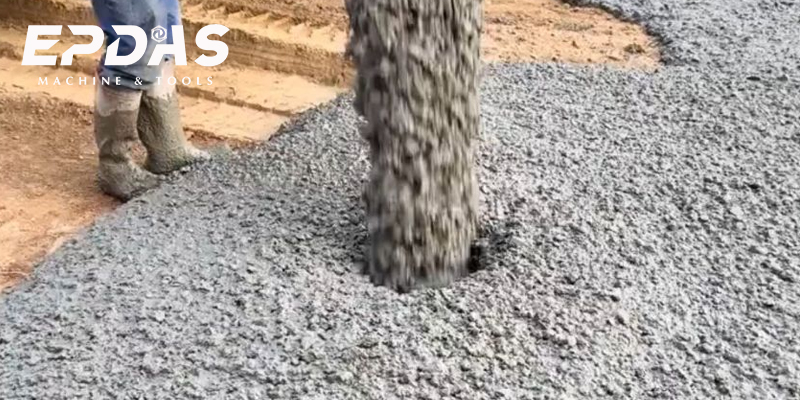
With the development of modern construction projects in the direction of ultra-high-rise and large-span, the concrete boom pump truck has become the core equipment for concrete construction. It breaks through the space limitation of traditional concrete pouring, and with the flexible and retractable multi-section boom, its multi-section hydraulic boom system can flexibly extend to a height of 20-50 meters, which solves the concrete conveying problem of high-rise buildings. Compared with manual handling or fixing the pump pipe, the boom pump truck eliminates the time for frequent dismantling and installation of the pipe, and the construction efficiency is greatly improved.
The operator can control the pouring position and speed through remote control. Concrete pumper truck compact chassis design and fully rotating boom enable it to operate in narrow Spaces as small as 6 meters wide, ensuring construction progress while minimizing the impact on the surrounding environment to the greatest extent. From material ratio optimization to the final structural formation, boom pump trucks have become important equipment in modern construction.
Concrete boom pump truck is a kind of concrete conveying equipment that mounts the pump body on the chassis of a car, equipped with articulated boom (i.e. pump arm), which usually consists of more than 3 sections of high-strength alloy steel arm sections, and is hydraulically driven to realize the horizontal rotation and vertical tilt, with the farthest stretching distance of up to 50 meters or more. The end of the boom is also equipped with a flexible adjustable hose, which enables the constructor to realize the precision control of concrete pouring.
Being mounted on a vehicle, this equipment is free to travel to and from various work sites, shuttling between various terrains in the city, with a single pumper making up to several transitions per day on average. In terms of pumping performance, the concrete boom pump adopts double-cylinder piston pumping mechanism, the maximum conveying capacity of up to 140 cubic meters per hour, with the placing boom to form a radius of up to 30 meters of the fabric coverage, can efficiently complete the continuous conveying of concrete operations.
Among many concrete construction machinery and equipment, the concrete placing boom has become the first choice for many construction projects due to its powerful functions and flexible performance. Because of its towering boom shape, it is also called “sky pump”. Compared with the cumbersome process of laying a large number of pipes required for traditional floor pumps, it can reduce the investment in auxiliary equipment by 50%, and is especially suitable for large-scale projects with a concrete pouring demand of over 10,000 cubic meters, such as subway hubs and water conservancy dams.
The pumping truck continuously conveys concrete through the pipeline through pressure, and can complete the transportation of concrete at the site at one time. It has the features of good pumping performance, wide range of fabric, high flexibility, convenient transfer, etc., which provides great convenience for the construction personnel, especially suitable for the projects with large demand of concrete pouring.
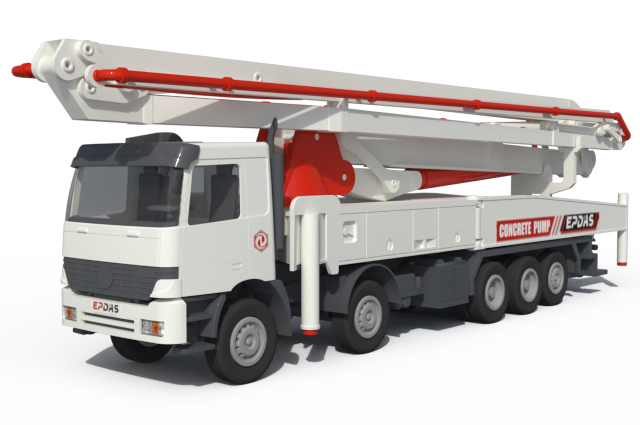
The main function of the spraying arm is to precisely position the concrete in the correct location, with it there is no need for telescopic lifting platforms and scaffolding. The size of the nozzle and the overall design are key factors. A well-designed nozzle can ensure the minimum rebound of concrete, maximize the material utilization rate, and at the same time guarantee the thorough mixing of concrete, which is conducive to improving the quality of shotcrete.

The air compressor provides kinetic energy for concrete shotcreting and compaction. Maintain 0.4-0.6MPa working pressure and 30-60m³/min flow rate. Adjust the parameters according to the concrete proportion and spraying distance, choose 38-50mm nozzle to ensure the spraying speed of 8-12m/s to ensure the adhesion effect.
The motorized chassis, serving as the transportation platform for the concrete pump, can move it to the required construction location. The chassis is of vital importance as it needs to be capable of navigating in relatively confined Spaces and working on the uneven terrain commonly found at construction sites. The chassis is usually equipped with a powerful engine, a reliable transmission system and a sturdy suspension system to ensure good maneuverability and stability.

The control panel is the main interface for the operator to control the pumper. It allows the operator to monitor and confirm the condition of the ready-mixed concrete in the hopper and adjust the pumping speed through the control panel.
Workers can also control the concrete spraying on site with a remote control. There are two types of remote controls: wireless and wired. No matter which type it is, it enables workers to operate all the equipment for pumping concrete from a safe and convenient place. With this remote control function, work becomes more precise and efficient, especially in those complex areas that are difficult to construct.

Concrete pipes are vital in the safe and efficient transportation of concrete. They consist of a steel outer wall that provides strength and protection, and a wear-resistant lining that prevents corrosion and hardening of the concrete inside the pipe.
The concrete line pump truck hose is an end component of the entire vehicle system, featuring excellent flexibility and the ability to swing flexibly in the direction of operation by construction workers. The hose can effectively alleviate the impact force when concrete is sprayed out, preventing splashing and pipe jumping. It is made of wear-resistant rubber and has strong pressure resistance and wear resistance.

The concrete pump is mounted on the back of the vehicle chassis, mainly to facilitate unloading of concrete into the pouring area. First, the concrete mixer truck unloads the concrete into the hopper of the small concrete pump truck. Then, the pump presses the concrete into the delivery pipe and discharges it through the terminal hose.
The telescoping of each section of the boom is accomplished by the telescoping of each section of the boom cylinder respectively. Among them, the first section of the boom can swing in the range of 2°-90°, and the second and third sections of the boom can swing in the range of 180°. It is worth mentioning that the fourth section of the boom can be extended sequentially. During the construction process, the movement of the fourth section of the boom is relatively frequent, and the swing angle of this section of the boom is about 240°.
Finally, the end of the hose should be as close as possible to the pouring area during the concrete construction. The boom is driven by a rotating motor and reducer and rotates 365° around a fixed turntable. After completion of the work, the boom can be retracted in the opposite order to the original one.
Boom pump trucks can dramatically speed up concrete pouring. While traditional manual pouring or ordinary pumping equipment requires many people to work together to carry and lay pipes, boom pump trucks can directly deliver concrete to the pouring point through the flexible extension arm, eliminating a large number of auxiliary processes.
Boom Pump adopts multi-section hydraulic folding boom and its compact design is especially suitable for narrow construction sites, and it can accurately pour in complex areas such as high altitude and deep pits without moving the chassis, which effectively solves the problem of space limitation. The positioning accuracy of the hydraulic system reaches 0.1° to ensure the construction quality.
The boom pump truck realizes precise distribution through remote control operation, and the operator can control the precision of the concrete drop point up to millimeter level, avoiding the problems of spilling and uneven accumulation of manual pouring.
In terms of labor costs, the boom pump truck reduces the need for labor in handling, pipe laying, and pipe removal, saving more than 50% of labor compared with the traditional method. Precise distribution avoids spilling of concrete, and the use of pumping agent can reduce cement loss.
Boom pump truck’s outrigger automatic leveling, boom anti-collision sensor and other functions reduce the risk of equipment overturning. Operators work in the safe area through the remote control, away from heights and pouring points, which reduces safety hazards such as fall and splash injuries.

Concrete is pumped directly through the boom, eliminating the time of traditional manual transportation or pipeline laying, and increasing the efficiency by 3-5 times; moreover, its large-displacement pumping system can meet the demand for high-intensity construction, especially suitable for large foundations, high-rise buildings and other scenarios.
Multi-section folding boom is an important guarantee to adapt to complex working conditions, usually 3-5 sections of the boom, realizing accurate fabrication in three-dimensional space, avoiding frequent movement of the equipment and improving construction efficiency.
The remote control operation allows the operator to precisely control the concrete drop point through the wireless remote control. Moreover, the high-pressure pumping with the end hose can effectively avoid the concrete layering and segregation, ensuring the quality of concrete pouring.
In terms of narrow space operation, compared with fixed pumps that need to lay pipes, the pump truck has obvious advantages in narrow sites (e.g., urban areas and basements); at the same time, its self-contained chassis is highly maneuverable, and switching between projects can be done only by driving without dismantling the pipes, which realizes quick transfer to adapt to the construction needs of different sites.
In terms of cost optimization, it reduces the number of personnel involved in handling, pipe laying and pipe dismantling, which decreases manpower demand by more than 50% and lowers labor costs; and the precise distribution avoids spilling of concrete, and the use of it together with the pumping agent reduces the loss of cement and the waste of materials.
In terms of stability design, the outrigger automatic leveling, boom anti-collision sensor, and emergency retraction function effectively reduce the risk of tipping; meanwhile, the man-machine isolation design keeps the operator away from heights and pouring points, avoiding fall and splash injuries, and safeguarding the operator’s safety.
The concrete boom pump truck has many kinds of structural classification, respectively, “Type R”, “Type M”, “comprehensive”. These types represent the contraction of the pump boom. R-type compact structure, more flexible and stable in the process of driving, M-type boom pump truck boom system adopts Z-type folding form, in the opening and folding action is rapid, comprehensive type is combined with the advantages of the first two and gradually widely used.
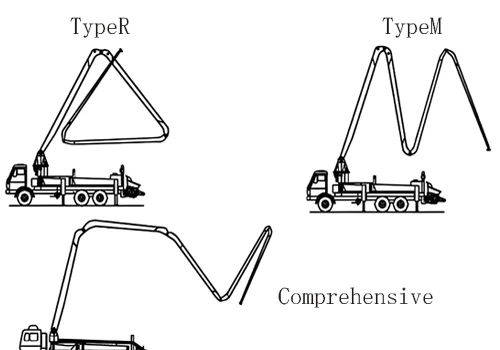
EPDAS offers a comprehensive range of boom pump solutions, covering a full range of product configurations from compact to extra-large. EPDAS offers a variety of boom pump sizes and configurations to meet your unique requirements for boom design, spread height, vertical and horizontal reach, pump output and pressure specifications.
Versatile Boom Systems:
4-6 section RZ type folding boom structure
Working height range: 28-101 meters
Horizontal reach radius: 18-48 meters
360° full slewing capability
High-performance Pumping System:
Theoretical delivery capacity: 60-200m³/h
Maximum pumping pressure: 8-22MPa
Optional S-valve or gate valve system
Equipped with intelligent pressure adjustment function
Customized Configuration Options:
Dual diesel/electric power options
H-type or X-type legs
Intelligent control system (optional)
Special wear-resistant pipe configurations
Our engineering team can provide professional technical advice and equipment customization services according to your specific construction needs, to ensure that the performance of the equipment matches the project requirements:
Concrete pouring for high-rise buildings
Confined space work
Mass concrete construction
Specialty applications
If you are looking for high quality concrete boom pump trucks, EPDAS concrete pump trucks can be of great help to you. With years of experience supplying concrete pumps to construction companies, we are able to offer a wide range of pump trucks for a variety of construction applications.Our boom pump truck enables you to reach hard-to-reach places, achieve efficient and precise pouring, and meet the needs of different construction scenarios. Contact us today to learn more about our products and let us provide strong support for your next project.
